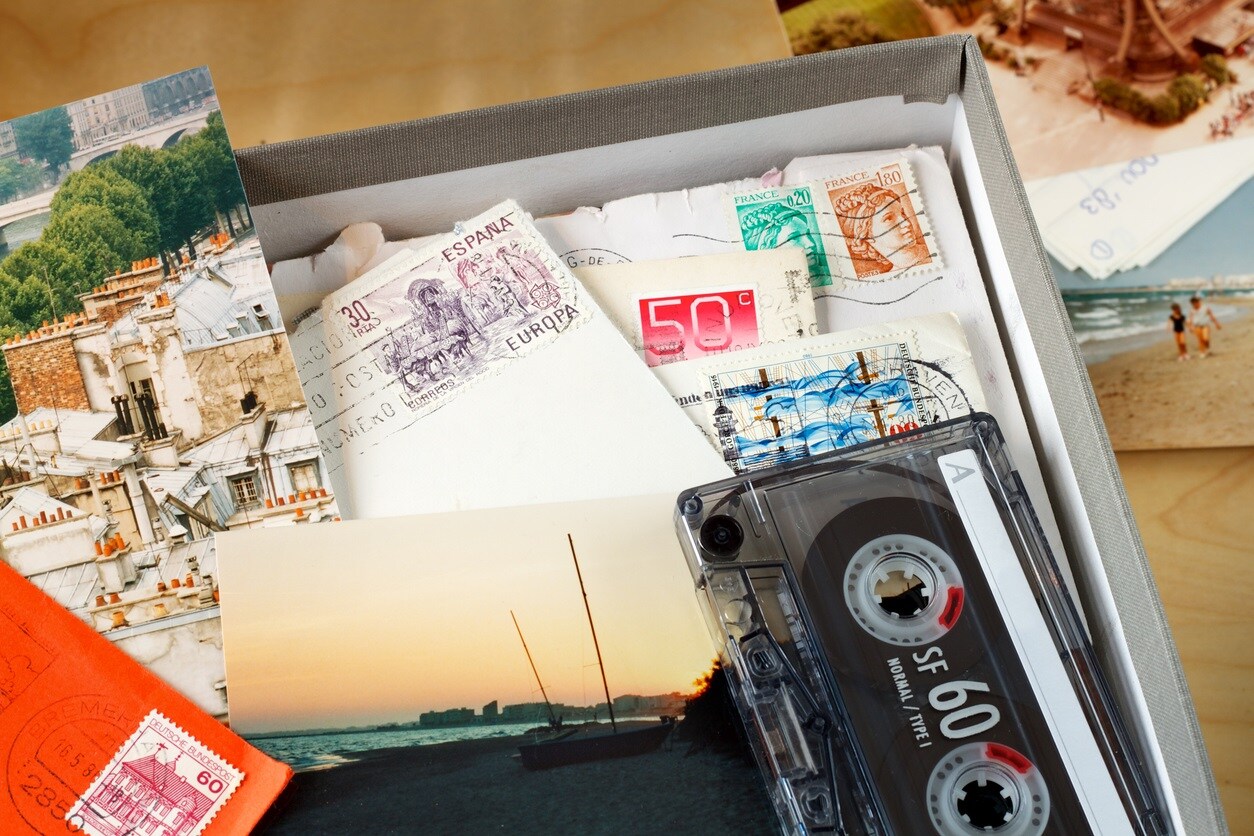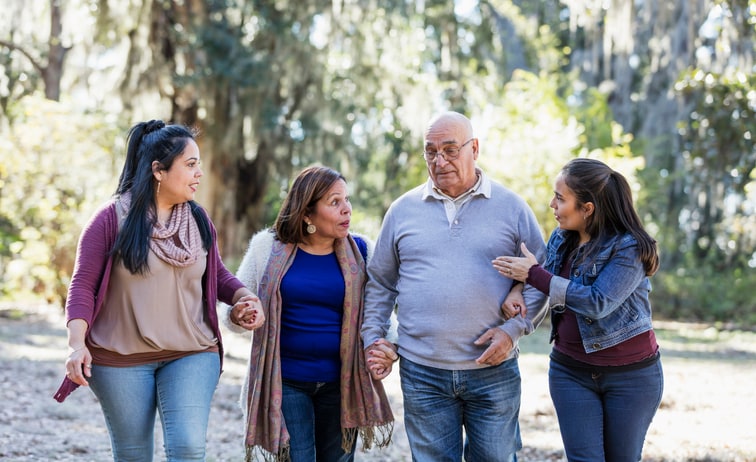When I told my grandma that I wanted to interview her about her life, she looked at me matter-of-factly and proclaimed, “It’s not all that interesting.”
Thank goodness our interview didn’t end there because, after a little prompting, the floodgates opened and out poured story after story, each one more interesting than the last.
By the time our conversation ended, I had compiled enough memories, reflections and life lessons to create a small book for all of my grandma’s children and grandchildren. For many in our family, it’s a treasured keepsake and something that we’ll love even more with time.
Want to make a keepsake book of your own? Here are my six tips for making sure that you collect all the memories you need to make this book special for everyone.
1. Figure out How You’ll Record the Interview
You won’t need much when it comes to recording your loved one’s story — a voice recorder, a notebook and a pen will be enough to get you started.
Old-school voice recorders are pretty hard to come by nowadays, but there are plenty of apps out there that you can use to record your interview. The easiest, no-frills one is Voice Memos, which comes standard on all iPhones. Voice Record Pro is also a good choice — this one has a dial that moves in relation to how much sound it’s picking up, which is handy when you’re trying to figure out where to position the recorder. Regardless of which product you choose, make sure to familiarize yourself with it before your interview. Know how to create new recordings and how to save them. This will save you a lot of worry later on.
2. Come up With Your Interview Questions
After you’ve got the recorder figured out, it’s time to brainstorm your interview questions.
I typically divide my list into three categories: “Childhood,” the “Working Years” and “Older Adulthood.” Within these categories, think about what transitions have occurred: getting that first job, becoming an adult, getting married, becoming a parent, etc. Try to come up with about 10 questions for each — or however many you think it would take to jog your loved one’s memory without overwhelming them.
Once you have your questions, consider giving them to your loved one before the interview so that they have a chance to think about their responses.
3. Get Them Talking
When it comes time for the interview, the best thing you can do is encourage conversation — and lots of it. Photos can help stimulate memories, so bring out those old albums and start paging through them together.
Some other strategies that are helpful:
- Start at the beginning and work toward the present (this will also help you later on when you’re creating your keepsake book);
- Ask open-ended questions;
- Avoid questions that can be answered with either a “yes” or a “no”; and,
- Get comfortable with silence — don’t just rush to fill the silence with another question.
4. Transcribe the Interview
Once you have the recording, it’s time to transcribe it.
Unfortunately, you can’t just put the recording into speech recognition software like Dragon; that kind of software is built for one voice at a time, not several. But, luckily, there are a variety of apps and programs optimized for transcribing interviews; they slow down your recording so you can easily type while you listen to the playback.
I prefer oTranscribe, a free Google Chrome extension, but explore your options to see which would work best for you and your needs!
5. Organize and Edit Your Document
The next step in creating your memory book is to organize and edit your interview — this can be easily done in Microsoft Word.
First, create two new documents. In one, insert section headings for childhood, the working years and older adulthood. In the other new document, copy and paste your transcribed interview. Then, you’ll need to go through the interview paragraph by paragraph, moving chunks of text to where they belong in the document that has the section headings.
If you want to give your book a more dynamic feel, think about including old photographs, ticket stubs, anything that your loved one finds meaningful. All you’d need to do is scan them and include the images in your document!
6. Create Your Book
Here comes the fun part: actually printing your memory book!
For some people, that’s as simple as printing the final Word document of the interview. If you’d like your final product to look more like an actual book, you can use websites like CreateSpace that print self-published books on demand. All you’d need to do is to upload your Word document to the website! (And don’t worry — your book won’t be released to the public unless you want it to be.)
Once you design a front and back cover for your book, you simply plug in how many copies you’d like printed and within a couple of weeks, actual paperback books of your interview will arrive at your home.
Not only are memory books invaluable for recording family histories, they also make wonderful presents for birthdays and other major life events. And the bonus is that they’re really fun to put together!



